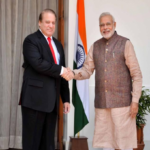India has made significant strides in countering the growing menace of drone swarms with the successful test firing of its low-cost counter-drone system, Bhargavastra. The test, conducted at the Seaward Firing Range in Gopalpur, has proven the system’s ability to neutralise the threat posed by drones, particularly in a time when drone swarms are increasingly being used in both military and civilian contexts.
The Bhargavastra system uses micro rockets to target and eliminate hostile drones. On Tuesday, the system met all specified performance targets, demonstrating its effectiveness and precision in intercepting unmanned aerial vehicles in a real-world scenario. The test firing is seen as a crucial step in India’s efforts to bolster its air defence capabilities against the growing vulnerability of its airspace to drone-based threats.
Developed by the Defence Research and Development Organisation , Bhargavastra is designed to be both cost-effective and efficient in dealing with a range of drone-based threats. As drones become more sophisticated and increasingly utilised in warfare, surveillance, and even terrorist activities, traditional defence systems struggle to keep pace with their speed, agility, and often smaller size. This has led many nations, including India, to invest in counter-drone technologies that can provide a robust response without being prohibitively expensive.
The successful test of Bhargavastra could mark the beginning of a new era in counter-drone technology, with the system offering an affordable solution for the Indian military. Given the rising number of global drone-related security threats, India’s development of this low-cost alternative is being viewed as a significant milestone. The Bhargavastra system has been designed to counter a variety of drone swarms, with the potential for widespread application in military, border security, and strategic infrastructure protection.
Experts believe that Bhargavastra’s design could also have implications for other nations facing similar security threats from drone technology. Unlike traditional counter-air systems, which are often complex and expensive, Bhargavastra’s micro rocket system offers a simpler yet highly effective means of neutralising drones at a fraction of the cost.
India’s Ministry of Defence has expressed confidence in the system’s potential, and with the successful test, the next steps could involve scaling up production and field deployment. The system’s ability to intercept drones at various altitudes and speeds could also provide additional layers of protection for key military installations, including air bases, critical infrastructure, and areas prone to hostile drone incursions.
This development comes at a time when nations around the world are grappling with the security risks posed by drones. In the past few years, several countries have experienced high-profile incidents where drones were used for surveillance, espionage, and even carrying explosives. The increasing reliance on drones by both state and non-state actors has necessitated the rapid evolution of countermeasures.
In response to these threats, India’s defence community has been focusing on developing systems that can quickly and effectively neutralise drones in various environments. Bhargavastra is designed to be highly adaptable, with the potential for integration into existing military platforms. The system could be mounted on vehicles, ships, or stationary defence posts, offering significant flexibility in deployment.
The success of the test is expected to give a boost to India’s growing defence sector, particularly in the field of unmanned systems and countermeasures. The DRDO’s work on Bhargavastra reflects a broader trend in India’s defence innovation, with a growing emphasis on indigenously developed solutions to address contemporary security challenges. The defence sector is expected to see further advancements as India continues to invest in advanced technologies to modernise its military.
As the global arms market continues to evolve, counter-drone systems like Bhargavastra could become essential tools for securing airspace and critical infrastructure. This successful test firing highlights not only India’s growing technological prowess but also its commitment to addressing modern security threats through innovation and cost-effective solutions.




 Nawaz Sharif’s Alleged Role in Military Operation Against India
Nawaz Sharif’s Alleged Role in Military Operation Against India 